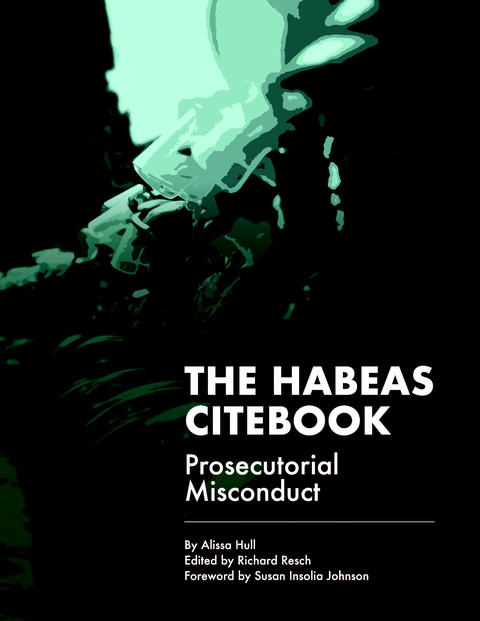Federal Habeas Corpus: Retroactivity of New Rules
I remember the first time I heard a lawyer say that a new Supreme Court decision wasn’t a new rule, so it applied retroactively on collateral review. That didn’t make sense to me, and when I asked how that was possible, she told me to read Teague v. Lane, 489 U.S. 288 (1989), and get back to her. I read the Supreme Court’s convoluted opinion in that case and was even more confused. But after studying subsequent Supreme Court cases on Teague and its progeny things made more sense.
In my book, WinningCites: Section 2255, a Handbook for Prisoners and Lawyers, I distill and explain the most important aspects of retroactivity that apply to collateral review cases. This column will touch on some of those points and hopefully get you thinking.
What Is a ‘New Rule?
’The truth is that the Supreme Court rarely explicitly states when its decision constitutes a new rule and whether it applies retroactively on collateral review. Instead, this task is left up to the lower courts, which often disagree on the retroactivity of new Supreme Court decisions. Recall that the Court’s decision in Johnson v. United States, 135 S. Ct. 2551 (2015), declaring the residual clause of the Armed Career Criminal Act (“ACCA”) statute unconstitutional, divided the lower courts over retroactivity until the Supreme Court itself, in a rare move, held its decision was new and retroactive. Welch v. United States, 136 S. Ct. 1257 (2016).
Figuring out when a Supreme Court decision is a “new rule” is not a simple task. There’s no “If it’s this, then it’s that” formula. But the Supreme Court itself has provided some guidance on when its decisions are new rules: A decision that breaks new ground, imposes a new obligation on the government, or overturns precedent would be a new rule. Saffle v. Parks, 494 U.S. 484 (1990).
The criterion that seems to be the most confusing is when the Court’s decision imposes a new obligation on the government. A good example was when the Court declared Florida’s hard cut-off IQ of 70 to determine if someone was intellectually disabled (formerly mentally retarded), barring the death penalty, to be unconstitutional. Hall v. Florida, 572 U.S. 701 (2014). This was held by the lower court to be a new obligation on the government (the state) because it now required it to do more than just assign an IQ number to someone to determine if they are eligible for the death penalty.
New Rules Generally Do Not Apply Retroactively
Let’s revisit what my lawyer-friend told me about old rules applying retroactively but not new rules. The reason old rules apply retroactively on collateral review is because an “old” rule is really just a decision in the same vein as an older decision. There’s nothing “new” about it. That doesn’t mean that the old rule opens the door for a collateral attack as a retroactive rule. It just means once in the door, the old rule can apply.
Teague’s nonretroactivity doctrine was created by the Court to protect the “strong interest in the finality of criminal convictions.” It’s all about keeping final cases “final,” the Court said. Lockhart v. Fretwell, 506 U.S. 364 (1993). In fact, Teague’s nonretroactivity doctrine applies only to prisoners, not the government. In Flamer v. Delaware, 68 F.3d 710 (3d Cir. 1995), Third Circuit Judge Samuel Alito (now U.S. Supreme Court Justice Alito) summed it up best: Teague applies only to a change in law that favors criminal defendants. Even before the AEDPA, courts put up roadblocks to prisoners in obtaining relief. Actually, AEDPA codified a lot of those roadblocks, including Teague’s nonretroactivity bar. Don’t get this confused with the government arguing new rules to convince the court to deny your motion. The government (and court) can apply new rules to deny you relief. Teague didn’t bar that.
New statutes are not “rules” under Teague, so it doesn’t affect them. A statute only applies retroactively if Congress expressly says so. Landgraf v. USI Film Prods., 511 U.S. 244 (1994). We saw that recently with the First Step Act of 2018, with some provisions of the law applying retroactively and most others not.
Exceptions to the Nonretroactivity Doctrine
There are some exceptions to the nonretroactivity doctrine, which align with exceptions to the “finality” of criminal convictions in other contexts under the AEDPA. And any exception to finality in any context must have a convincing reason.
A new rule is labeled either “procedural” or “substantive,” with substantive rules always applying retroactively and procedural rules applying retroactively in only a few narrow situations. I think this is where the most confusion happens: determining the label of a new rule.
Procedural rules have been defined as those that set or alter the methods for determining a defendant’s punishment. Welch. The Supreme Court’s landmark decision in United States v. Booker, 543 U.S. 220 (2005), is a good example of a procedural rule that was not retroactive. In that case, the Court declared the mandatory nature of the sentencing Guidelines unconstitutional and made them advisory only. The decision merely changed the procedure for imposing a sentence, courts have said in holding Booker as a nonretroactive procedural rule.
In contrast, substantive rules implicate the innocence or guilt of a person. These rules “place particular conduct or persons covered by the [criminal] statute beyond the [government’s] power to punish.” Schriro v. Summerlin, 542 U.S. 348 (2004). These rules always apply retroactively on collateral review – they open the door for collateral review of a conviction.
Sometimes a new procedural rule can affect the “fundamental fairness and accuracy” of a criminal proceeding to such a degree that it’s what’s called a “watershed” rule. These rules don’t directly address innocence or guilt like substantive rules, but they’re still considered important enough to upset the finality of a conviction and apply retroactively. An example of a watershed rule is the Supreme Court’s groundbreaking decision in Gideon v. Wainwright, 372 U.S. 335 (1963), requiring that all felony defendants be appointed a lawyer to satisfy the Sixth Amendment. Another kind of rule that is automatically retroactive like a substantive rule is a Supreme Court decision interpreting a criminal statute in a more favorable way toward a defendant. That’s because when the Supreme Court interprets what a statute means, “it is explaining its understanding of what the statute has meant continuously since the date it became law.” Rivers v. Roadway Express, 511 U.S. 298 (1994).
Think about it. When the Supreme Court narrows the meaning of a criminal statute, there’s a risk that someone was convicted under the erroneous interpretation of the statute. Finality must step aside to allow the person to obtain relief. Bousley v. United States, 523 U.S. 614 (1998).
The nonretroactivity doctrine also doesn’t apply to cases on direct appeal. This is because a case on direct appeal is not yet “final,” and all new rules still apply to it. Griffith v. Kentucky, 479 U.S. 314 (1987).
Nonretroactivity Is An Affirmative Defense
Teague’s nonretroactivity doctrine is an affirmative defense that the government must invoke. This means the government can forfeit (ignore) retroactivity or even expressly waive it. Why would the government do such a thing? Just because the government concedes retroactivity in one case doesn’t mean that concession applies to all future cases. It only applies to that particular case. Losing one case to avoid the court declaring a damaging case to be retroactive is a tactic the government has used. Witherspoon v. United States, 2015 U.S. Dist. LEXIS 192123 (S.D. Fla. 2015), is an example of this tactic in practice.
While you don’t have to argue up front the retroactivity of the new Supreme Court decision you’re relying on, you should be ready to do so. Not only is it an easy defense for the government to raise, it’s likely to be raised by the court. Yes, the court can raise an affirmative defense on its own but only if the government doesn’t expressly waive it. Just be ready to show retroactivity of the new rule.
Conclusion
To make sense of retroactivity (and nonretroactivity) of new rules would take much more than this brief overview. My book explains all of these details and provides over 900 footnotes on case law and authorities. My hope is that this column gives you some direction to understanding retroactivity of new Supreme Court rulings.
Editor’s note: This is the second column in a continuing series on federal habeas corpus.
As a digital subscriber to Criminal Legal News, you can access full text and downloads for this and other premium content.
Already a subscriber? Login





